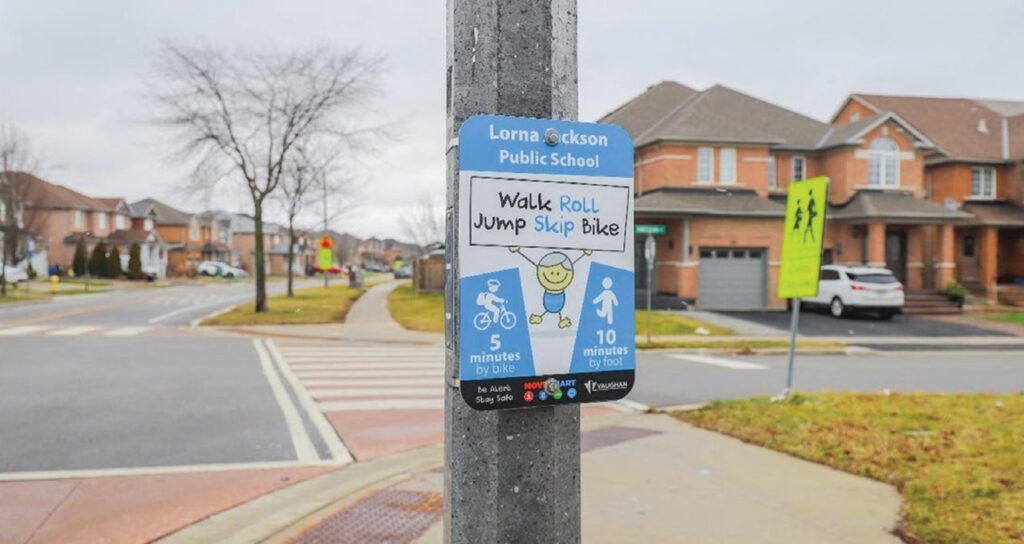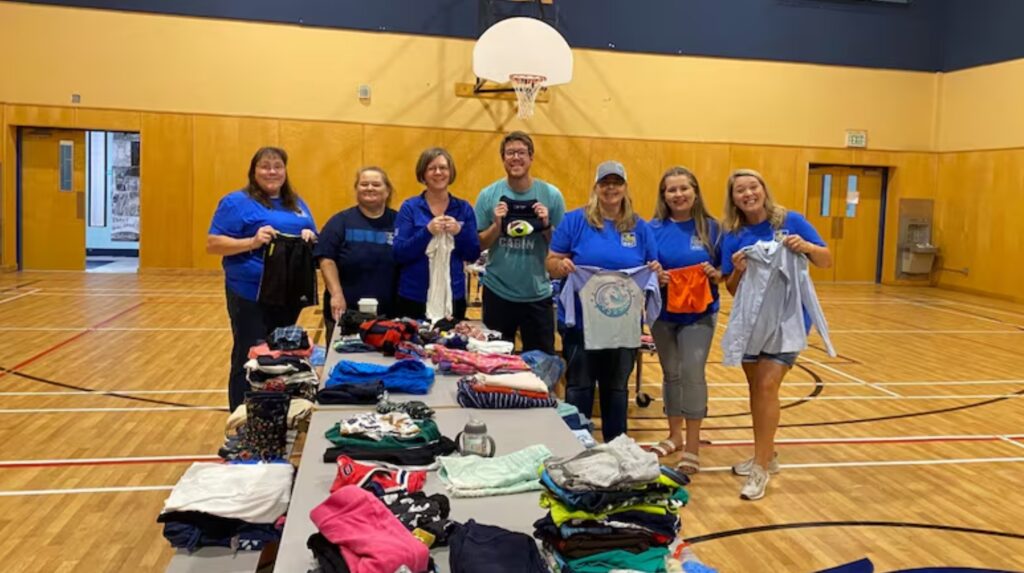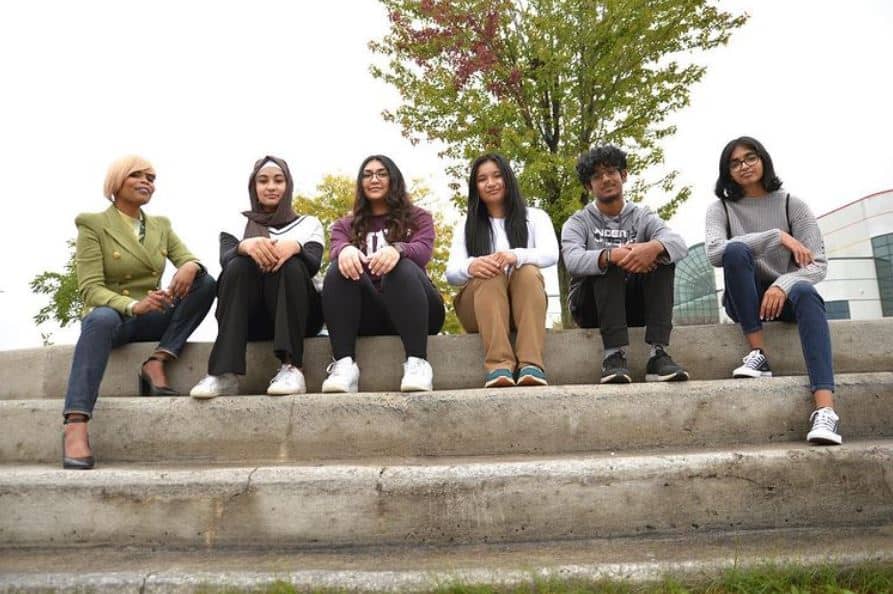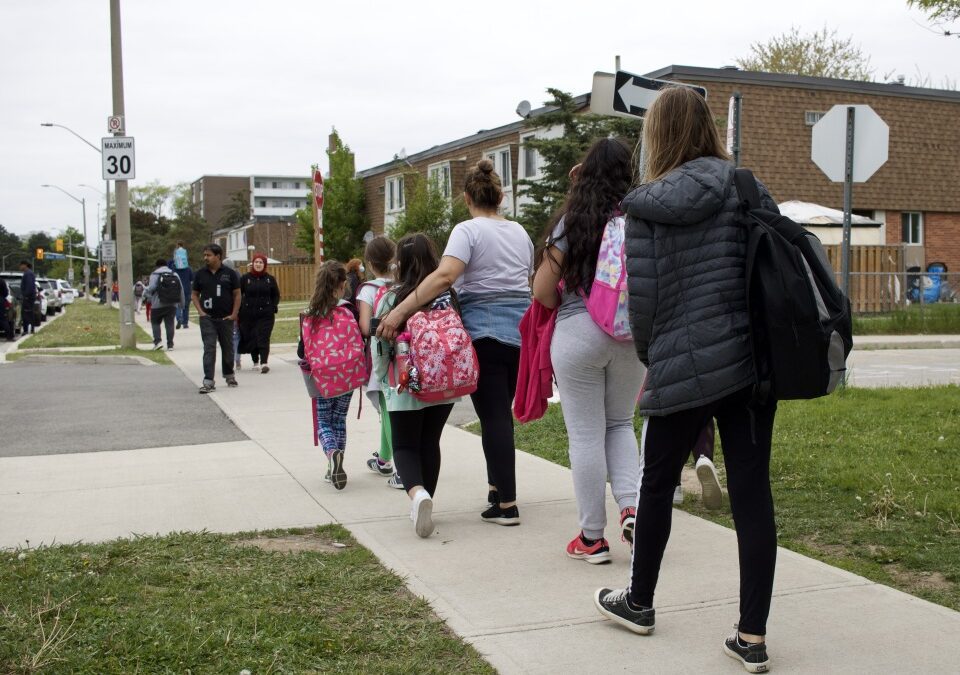When children walk, bike, or roll to school, they improve their wellbeing and the general health of their surrounding community. Every step or every wheel rotation doesn’t just get kids from point A to point B; it can also lead to some pretty impactful outcomes, such as:
- Better physical and mental health
- Cleaner air and fewer greenhouse gas emissions
- Safer, less congested streets around schools and in residential neighbourhoods
- Stronger social skills and friendships
- Reduced transportation costs
- Better focus and academic performance
- Increased familiarity and comfort with neighbourhood routes which can lead to lifelong habits of independence and active living.
Some of these wins might seem obvious to you. Moving more for school trips and throughout the day improves health outcomes. Fewer vehicles on the road decreases emissions, improves air quality, and reduces congestion. Traveling by foot or bike instead of by vehicle increases your chances of interacting socially with neighbours and friends.
However, you may be surprised by some of these less obvious reasons why active transportation matters.
First, living a long and healthy life is directly connected to how you move about. A TED Talk from 2017 highlighted the strongest predictors of a long, healthy life. The number one predictor was social integration – “how much you interact with people as you move through your day”. Encouraging a child or youth to travel actively for school trips increases their social integration and improves their chances to live longer and happier.
Get resources and tips on HOW to boost safety, enjoyment, and ease in your daily back-to-school travel routines.
Second, active school travel is universal and relatable. Walking, cycling, or rolling to school is something that most people have experience with. This common experience opens the door for good discussion between people of all ages and backgrounds. When active travel is discussed through an equity lens, gaps for underserved groups can be identified.

Photo Credit: City of Vaughan Active School Travel Pilot Program Summary
For some people, active school travel is a necessity, not just a preference. Some individuals may not be able to drive due to medical reasons; for others, it’s cost. Transportation is the second-largest household expense in Canada! Lower-income families may not be able to afford an insured, road-worthy personal vehicle and maintaining such an expense costs a household ten times as much as cycling would. For municipalities, the cost per kilometre of car infrastructure is also about ten times the cost for cycling or walking infrastructure.

Photo Credit: City of Vaughan Active School Travel Pilot Program
Discussions can lead to equitable, straightforward solutions to address barriers. For example, ensuring access to weather-appropriate gear – such as warm coats and waterproof boots – for walking or wheeling to school can make all the difference to a child’s safety and comfort. One inspiring example is from Queen Elizabeth School in New Brunswick. In 2023, the school held its first-ever “Back-to‑School Shop”. Families in need could select donated second‑hand clothing, backpacks, shoes, books, and supplies, all for free. The initiative was led by the vice-principal and a local consignment store. Families benefited greatly as the initiative recognized and addressed the needs of the large newcomer population at the school.

Queen Elizabeth School vice-principal Kyle Bishop, centre, is shown with volunteers and organizers during the school’s first back-to-school shop, in Moncton, N.B., on Aug. 19. The shop gave families a chance to choose from donated items ahead of the first day of school, all for free. (Submitted by Kyle Bishop)
Don’t stop there! Keep these important conversations going. At the kitchen table, in the classroom, or when speaking with decision makers, discuss how one student’s trip to school differs from another’s. Identify the inequities that exist and discuss how they may affect students and families:
- Some students and their caregivers may have disabilities that limit their mobility;
- Some students do not commute from the same home address throughout the school week, and some do not have a stable address altogether;
- Not all caregivers are able to accommodate additional time for sustainable school travel;
- Not all communities are safe places for students and their caregivers to navigate using AST;
- Intergenerational familial influences affect AST behaviours and perceptions of AST safety;
- Gendered barriers to AST are present;
- LGBTQ2S+ students do not face barriers or have concerns around navigating the public sphere.
Conversations like these can increase awareness, empathy, and lead to advocacy and actions that will improve school journeys for those with barriers.
Last – but certainly not least – children and youth need to feel empowered to take climate action. They hear about the impacts of climate change regularly, and the news is often disturbing. They also see its impacts in their communities – heat waves, severe flooding, and storms. This can cause climate anxiety. Providing young people with a feeling that they have the power to act is essential and improving their journeys to school is a great place for them to start.
A notable example of a student-led approach is the Youth Active School Travel Toolkit. A group of six students aged 14–16 from the Town of Ajax got the remarkable opportunity to co-author this toolkit with Jay Pitter, the award-winning leader in equity, sustainability, and urban placemaking. The resource tackles social and cultural barriers to walking and biking, such as racism, Islamophobia, and gender-based violence. The toolkit also includes personal stories, tips for encouraging youth-led engagement, and strategies for addressing common concerns raised by parents. This student-led project in Ajax is one of many community-based projects that received support from Green Communities Canada through the Ontario Active School Travel Fund. This fund was active from 2018 to 2022.

Pictured (left to right): Jay Pitter (Principal Placemaker), Noor Alshobaki, Ava Dikbikian, Armi de Francia (Active Transportation Coordinator, Town of Ajax), Sean Nishanthan, and Meghana Gorrepati Augustin.
Active school travel matters. Its benefits are clear. By talking about travel more often – along with its barriers and inequities – we elevate its importance. By engaging youth voices in solutions-based discussions on this topic, we invite youth to have a say in improving their own experiences. We also empower them to be the change they need to be.
To support this work, explore our “Equity and Engagement in School Travel Planning” report for guidance on impactful School Travel Planning initiatives that prioritize engagement and equity. Through planning and practice, your family can form habits that will last all year.

Recent Comments